It goes with the territory that I get to try out lots of new plants. Most are nice – but if they can’t pass muster, then they don’t stand a chance of getting a write-up here. There were however three that outshined all other this year – Diervilla ‘Kodiak Orange, Angelonia angelface ‘perfectly pink’ and Prince Tut Dwarf Egyptian Papyrus – here is why:
The Definition of Passing Muster (for a Plant on PITH + VIGOR):
- They have to survive and thrive without special care, which might not even include regular watering. I’m tough to please when it comes to low maintenance but still looking nice and thriving. A good plant has to be easy.
- They have to survive for at least a year (perennials, trees, and shrubs) – and the crazier the weather of that year, the more respect points a plant can earn. The autumn when this was written followed an unseasonably hot and dry summer. Lots of plants struggled more than normal, but these are the three plants that are still beautiful despite the torture they endured. They have rightfully earned a place in my garden for years to come.
- They must not be invasive. Not here in Massachusetts, where I live, or anywhere else that is similar. ⛔️The fact is invasive plant lists are constantly evolving, and every plant on them earns its way there. That means it has demonstrably gotten out of control somewhere for some reason. ⛔️ Therefore, If it is on a list for any state, that is a red flag to do more research and understand why it is on that list and why it might not (yet) be on the list for your area. Just because it isn’t on your local invasive list doesn’t mean it shouldn’t be or it won’t be soon (or, conversly that it ever will be). Just try and be smart and use your critical thinking skills – that is the best we can all do. I’ve got my eye on some plants that aren’t native, aren’t on the invasive list but I think could become an issue where I live. (ahem, some butterfly bush, scilla, etc – trust your gut)
- The plant needs to live up to most of the promises that the marketing people make. Selling plants is a business, and just like any other business, exaggerations are made (both slight and extreme, purposeful and innocently accidental). If it is way off though – I’m not going to be happy.
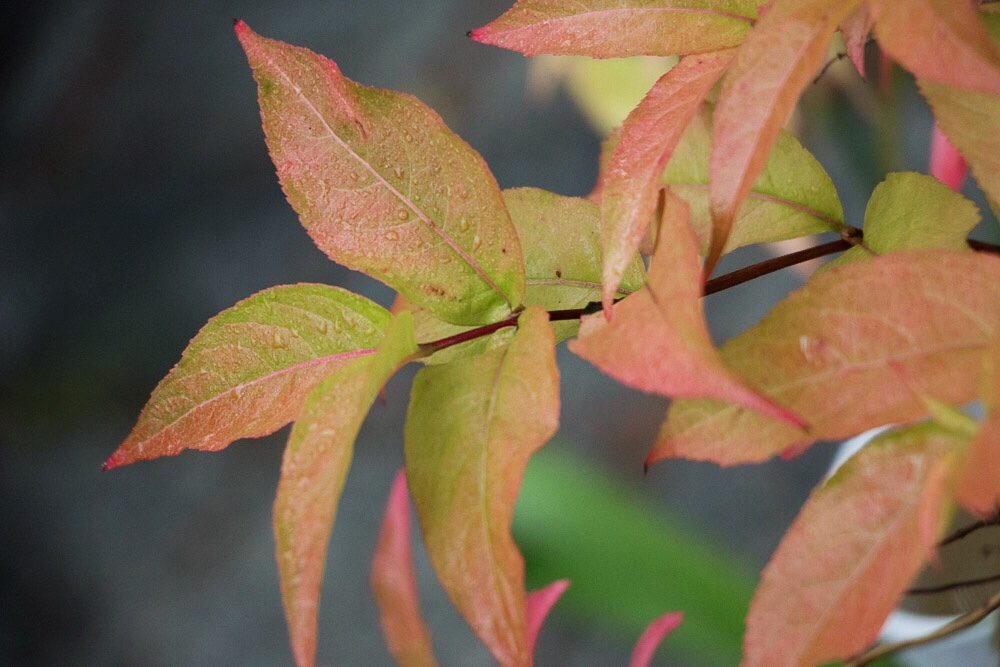
So the recent new additions that are really great are: Diervilla ‘Kodiak Orange’, Angelonia ‘Perfectly Pink’ and Prince Tut dwarf-Egyptian-Papyrus. All are availbe widley in local garden centers.
Diervilla ‘Kodiak Orange’
I’ve written about Diervilla before – even before I had given it a chance to fully settle into my garden. The first thing you will really notice about this plant is its stunning fall color. I am an enthusiast for plants with pretty leaves and nice texture.
But lets face it – If everything is special then nothing is special – and after a while, a whole bunch of these sorts of plants can start to run together and add up to a whole lot of boring.
Diervilla is however a fantastic break from the norm and it will spice up any garden.
New England is bracing itself for a short and less than spectacular fall since we had such a dry summer. But already the diervilla is outshining the surrounding native trees and shrubs. (I don’t know why I said it that way- Diervilla is also a native shrub to Eastern North America).
Kodiak Orange is a particularly pretty variety – it fades to a peachy-pink and then to a full orange that will make you wonder why you were missing that burning bush – Euonymus alatus (which BTW is TOTALLY INVASIVE AND SHOULD BE THE FIRST THING YOU CUT OUT OF YOUR GARDEN AND YOUR LIFE!!)
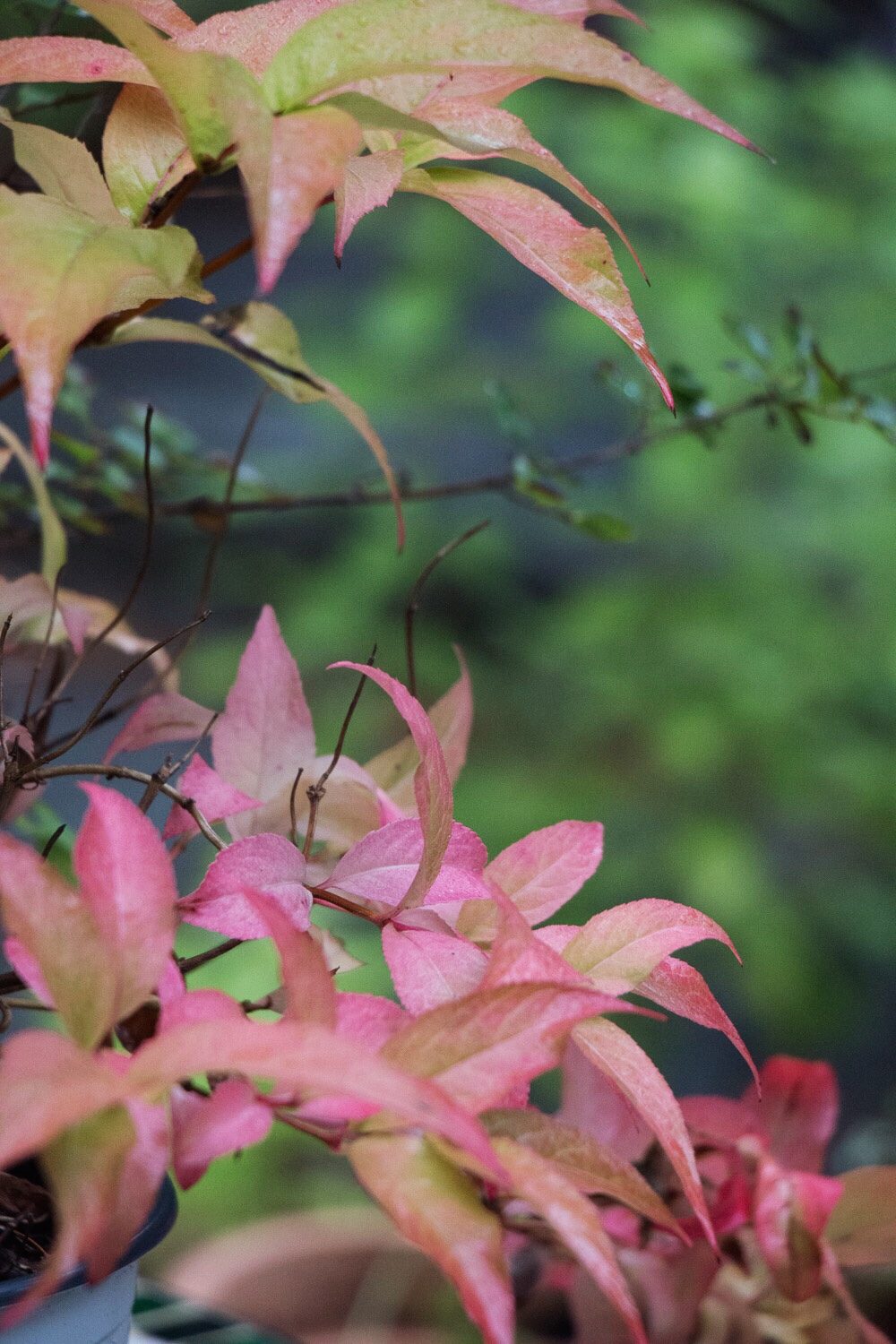
Angelonia ‘Perfectly Pink’ (Angelface)
Summer annuals like Angelonia are not usually something I feel overly enthusiastic about. Being annuals, they quickly fade from memory as I move on to something else the next year. But this is one I will look out for and will buy again – especially for container gardens.
It covered the basics in that it really performed all year. But I love it for other reasons too.
It is a natural beauty – I love a plant that isn’t over-bred to be a just-right shape – a perfect mound, a low dense mat, or a strict column.
Perfection is boring!!! (and I really don’t have alot of love for the mounds and meatballs effect)
While I prefer it in a container garden display – this Angelonia would look natural in a meadow – where many annuals would simply look too cultivated to truly fit in.
It would fit in a place where you are trying for that cultivated but natural look which is particularly popular at the moment. It is also a pretty shade of pink.
If you’ve been around here long enough you know I am picky about my pinks and I’m not a fan of many of the shades that breeders tend to favor. I avoid the saccharine sweet candy pinks that I find are too bright but love rich pastels and deep mauves – this is a beautiful combo of both. I wish I’d have planted many clusters of these in the garden, each of four of five plants rather than just one or two and next year I will certainly put it to greater use in my container plantings as well.
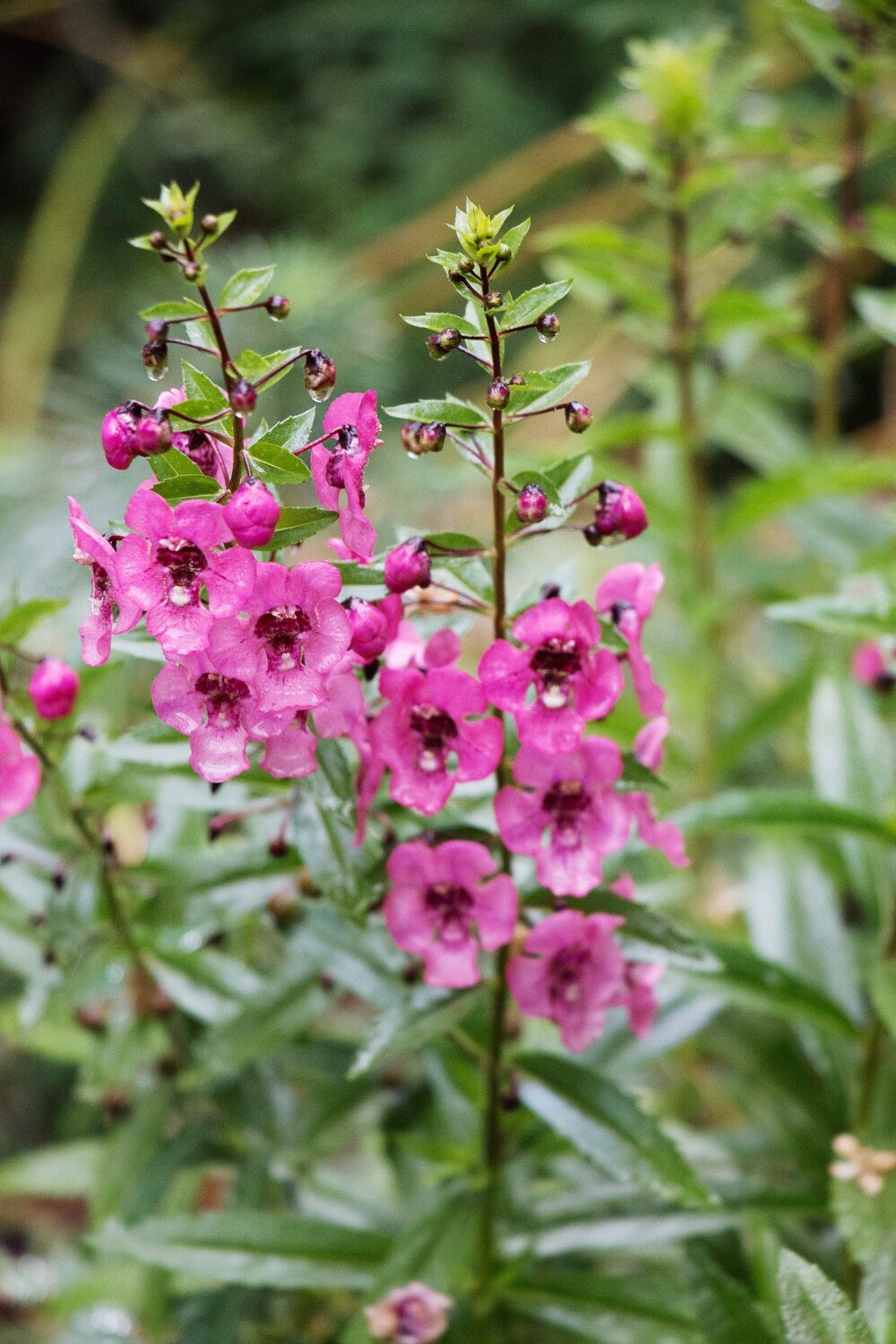
Prince Tut Dwarf Egyptian Papyrus
The last plant –Prince Tut dwarf-Egyptian-Papyrus – I thought surely would never find a place in my mostly dry garden on top of a hill.
I was dubious about its chance of success becasue I have little area (in this hot dry year I have8-0 none) that maintains a natural dampness. So any plant that announces itself as being perfect for a boggy areas or stream side seems disastrous from the start.
HOW TO CREATE STYLISH COLLECTED GARDENS IN POTS
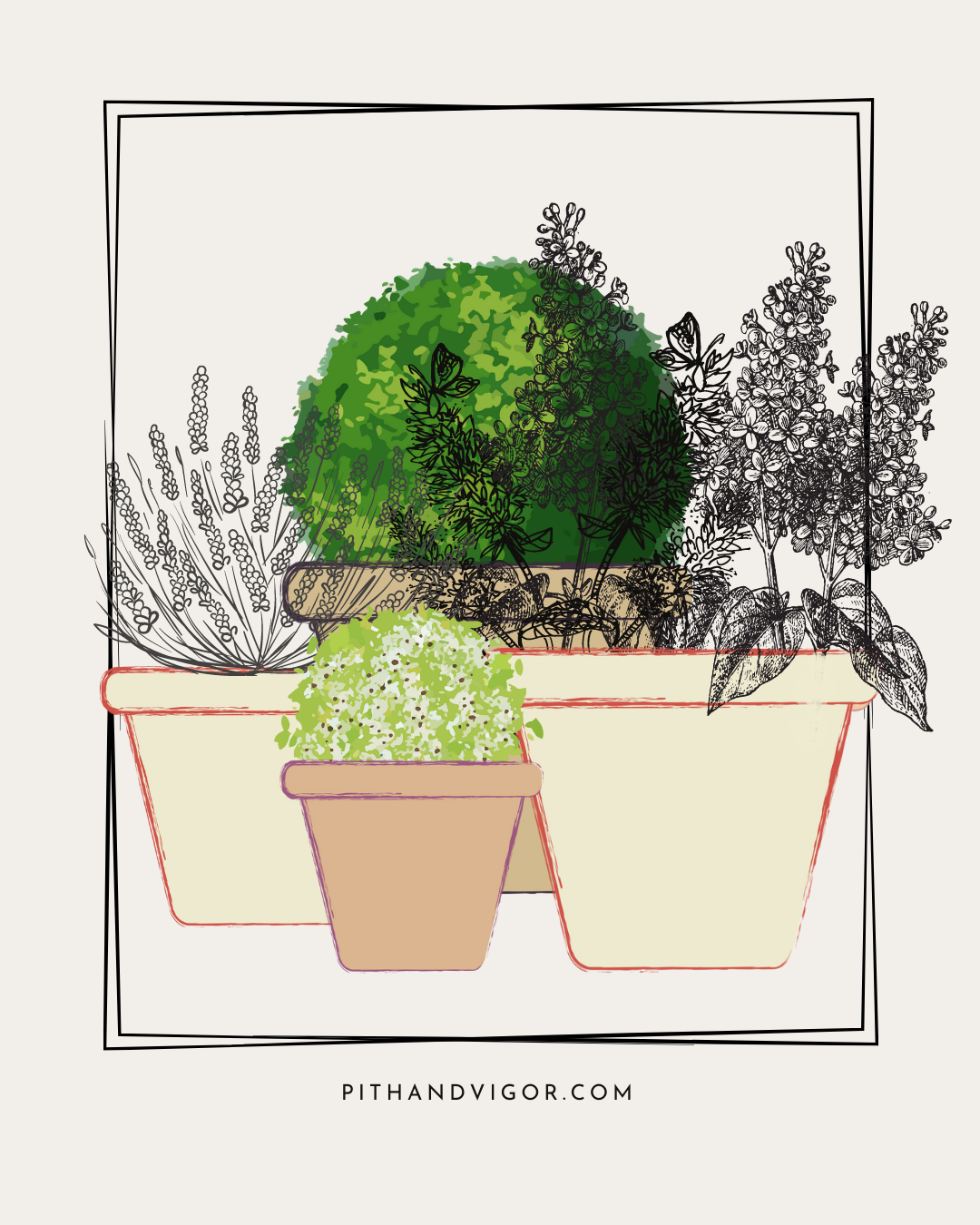
But I gave it was whirl in a typical patio pot (i.e. on an east facing patio in part shade) – and much to my surprise it was a really tough beauty. It won me over completely.
Despite struggling through the hottest months, (when I am sure it wished I was a little more doting with the water) it kicked into high gear as we coasted into September. It didn’t grow quite as tall as I’d expect in a wetter environment, but I hardly care because the foliage is so pretty and it really filled out nicely. I find this to be a perfect plant to keep in a pot all of its own it wants above average moisture – so maybe let a leaky hose drape over it, or place it near a downspout.
Mix and match it with other single containers and don’t worry that technically it would rather live in a swamp. It will easily give you those pretty heads of grass despite the worst heat.
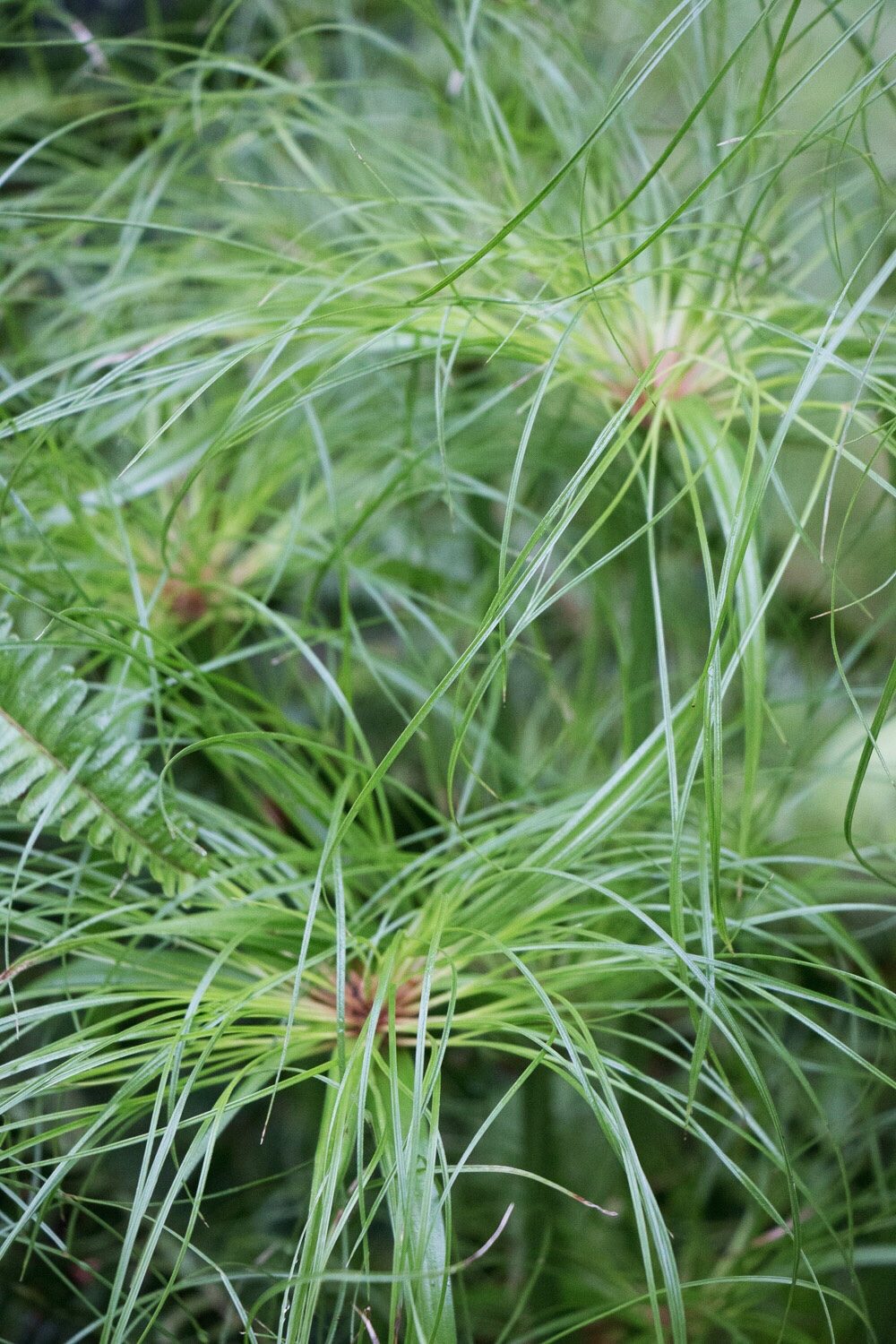
Papyrus is an annual in northern climates, but I’ve read that it might be possible to overwinter if you are ambitious. (Which I am not .) It easily grew plenty large enough in one season to feel satisfied with buying a new plant next year.
If you grew anything this year that was particularly impressive – I’d love to hear about it! Share it in the comments.
More Posts about Interesting new plants:
images: Rochelle Greayer and Proven Winners
I had a lot of fun with cucamelons this year, and will definitely grow them again. They’re also known as Mexican sour gherkin – and they’re not a cucumber or melon. They look like mouse-size watermelons (adorable!) and taste cucumbery with a touch of citrus. I wasn’t wild about them raw, though many like them straight off the vine. They were prolific and excellent pickled (I found a great Bon Apetit recipe for refrigerator pickles). They covered my bamboo fencing in my vegetable garden with beautifully shaped leaves and loads of fruit. Fabulous in many ways. Kids of all ages will love them.
Thanks for sharing about these plants. Diervilla, Angelonia and Papyrus. They look cool as they’re still beautiful after a hot summer. I’d love to have them in my garden too.
Thanks for your observation and opinion of Diervilla ‘Kodiak Orange’. I’ve been interested in acquiring this plant for my two acre trial & display garden at Four Season Landscape Design. Recently I’ve been working with a local flower farmer. We are testing many different native plants to determine if they are fit as cut flowers/branches and if the local florists are sufficiently entranced with them to buy. I’m sold on Itea ‘Henry’s Garnet’, Eryngium yuccifolium, Panicum ‘Shenandoah’ as cut flowers, there are many more to try with Diervilla ‘Kodiak Orange’ being one of them. I have no website of my own but I do maintain a website of a public garden in my vicinity where I helped plan, plant, and maintain Memorial Sunken Garden in Shelbyville IL. memorialsunkengarden.org